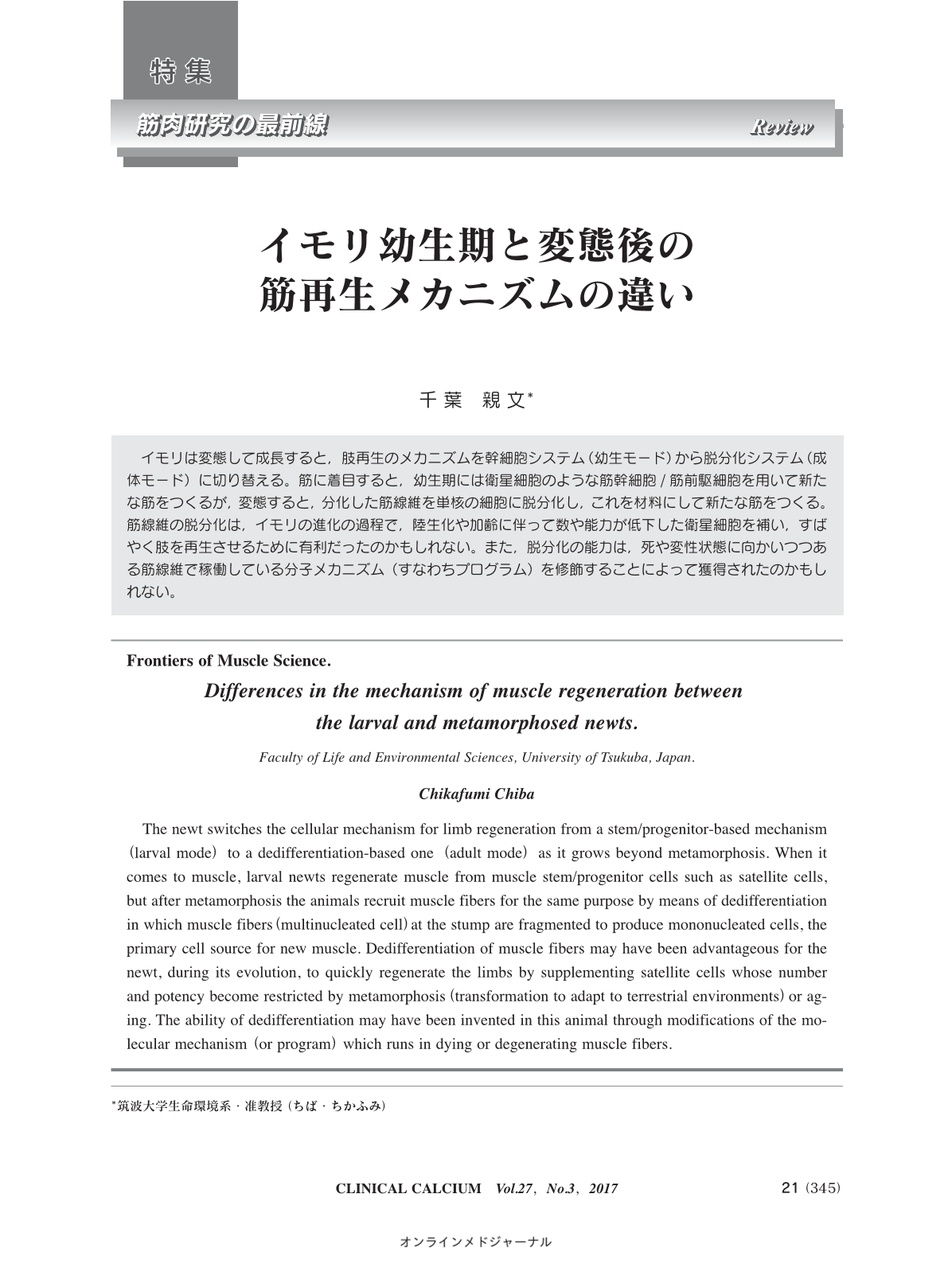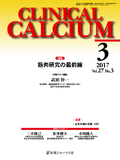Japanese
English
- 有料閲覧
- Abstract 文献概要
- 1ページ目 Look Inside
- 参考文献 Reference
イモリは変態して成長すると,肢再生のメカニズムを幹細胞システム(幼生モード)から脱分化システム(成体モード)に切り替える。筋に着目すると,幼生期には衛星細胞のような筋幹細胞/筋前駆細胞を用いて新たな筋をつくるが,変態すると,分化した筋線維を単核の細胞に脱分化し,これを材料にして新たな筋をつくる。筋線維の脱分化は,イモリの進化の過程で,陸生化や加齢に伴って数や能力が低下した衛星細胞を補い,すばやく肢を再生させるために有利だったのかもしれない。また,脱分化の能力は,死や変性状態に向かいつつある筋線維で稼働している分子メカニズム(すなわちプログラム)を修飾することによって獲得されたのかもしれない。
The newt switches the cellular mechanism for limb regeneration from a stem/progenitor-based mechanism(larval mode)to a dedifferentiation-based one(adult mode)as it grows beyond metamorphosis. When it comes to muscle, larval newts regenerate muscle from muscle stem/progenitor cells such as satellite cells, but after metamorphosis the animals recruit muscle fibers for the same purpose by means of dedifferentiation in which muscle fibers(multinucleated cell)at the stump are fragmented to produce mononucleated cells, the primary cell source for new muscle. Dedifferentiation of muscle fibers may have been advantageous for the newt, during its evolution, to quickly regenerate the limbs by supplementing satellite cells whose number and potency become restricted by metamorphosis(transformation to adapt to terrestrial environments)or aging. The ability of dedifferentiation may have been invented in this animal through modifications of the molecular mechanism(or program)which runs in dying or degenerating muscle fibers.



